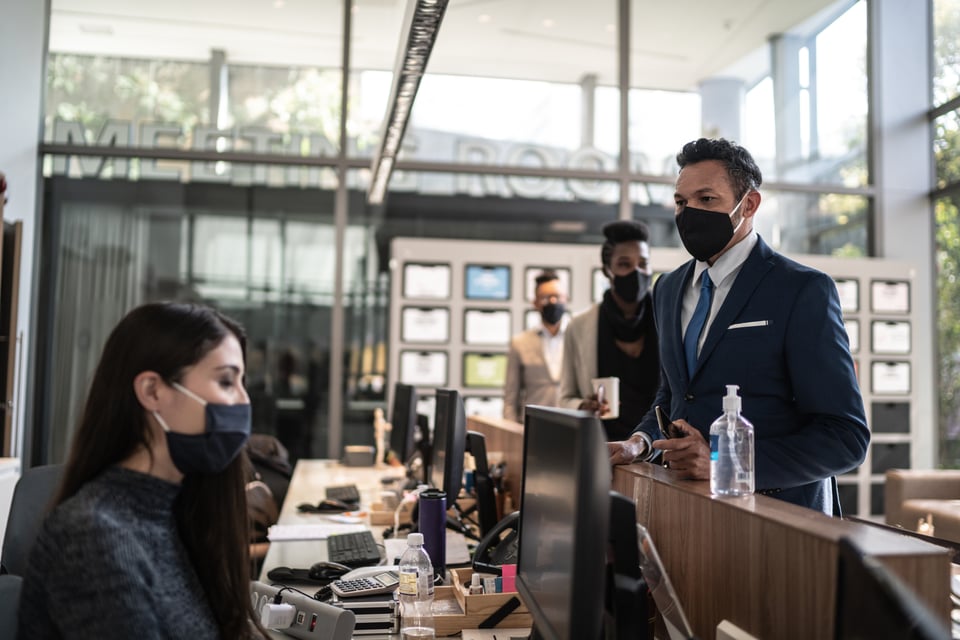Five Tips for Surviving Unsteady Occupancies
Hoteliers across the world are currently grappling with an incredibly difficult operating environment as guest numbers surge in often very unpredictable ways. Virus flashpoints, changing restrictions and altered booking behaviours mean that hotels often receive very little warning for both high and low occupancy at the moment. This in turn makes it very difficult to serve guests to the standards that hotels want to be able to provide to ensure they are delivering the very best experience for guests venturing out again.
Hoteliers have to rely on some core principles to be able to navigate this operating environment and call in help where it is available. These are five approaches we are talking to hoteliers about every day.
- Tracking the right metrics
As any hotelier now knows, cleaning lies at the heart of the return experience for guests. Tracking average cleaning times and measuring how long members of staff take to complete a cleaning activity from start to finish is essential in efficiently planning workforce deployment.
Similarly, tracking and calculating move around time in between jobs is also important. This is sometimes considered the ‘hidden cost’ of housekeeping as it measures the time spent on non-cleaning activities. For example, if hotels have rooms or floors hibernated, the travel time between cleaning jobs can be much longer than normal. Thinking about and tracking non-cleaning tasks is important so they don’t send operations over-budget.
Operations is the largest single line item on any hotel balance sheet and has a direct impact on Gross Operating Profit (GOP). Gaining accurate ‘to the second’ insight into this area can make the difference of thousands of dollars a week in profitability.
- Deploying tech in smart ways
Technology can be used to huge advantage in the current environment. With additional cleaning protocols adding more time to each clean, technology can be used to track the delta between old cleaning times and actual new cleaning times. This means that schedules are much more realistic, helping both hoteliers and operations staff to deliver comfortably against expectations.
Technology can deliver track and trace audit trails, helping hoteliers to keep on top of which operations staff were in which location at which time which is vital should an outbreak occur at your hotel and/or one of your staff gets sick.
- Optimizing lean teams
Many hotels are operating on the leanest teams possible at the moment, in an attempt to make the P&L as healthy as it can be. With the unpredictable nature of guest numbers, it can be very difficult to have the right staff in the right place on any given day to match the requirements of guests. Tackling this requires a multi-skilled team who can be versatile and deployed in a number of different ways. It also requires great communications channels so that people can be reached and deployed efficiently as they are needed.
Recognising that teams are stretched is important and that any new processes or tools deployed should be as streamlined and helpful for staff from the get-go. This is particularly relevant in relation to new technology as many hotels have cut their IT teams down to the bare minimum so there simply aren’t lots of support staff sitting around waiting to help. Technology deployments must be as intuitive and simple to roll out as possible to be useful now.
- Clustering some operations
Clustering the operational management of several properties can make sense in some cases. It gives one central team oversight over the movement of the housekeeping and operations staff and allows them to set a standardized approach across multiple teams. It also gives managers greater insight and control over pooling staff across hotels, evening out occupancy highs and lows within the clustered hotels.
When considering clustering, the starting point should be supervisory and management tasks such as schedule creation, briefing, monitoring, team assignments. These jobs can be executed and centrally managed, in real-time and across different properties with the right approach in place. Alongside these day-to-day tasks, training, recruitment and onboarding of staff can also be centralized and clustered.
- Delivering guest satisfaction whilst staying safely away
With a clean environment being such a high priority for guests, deploying and being able to prove cleaning protocols and procedures covered is now more important than ever. Setting up daily inspection quality scores is a good way to institute the right mindset throughout the hotel staffing teams. This begins with giving employees a reference guide of tasks that need to be completed by room type and enabling managers to automatically update it with any new protocols or procedure changes.
Hoteliers everywhere are working incredibly hard to adapt to the new normal and welcome guests back with open but socially distant arms. It is fantastic to see numbers of visitors rising but hand in hand with that, we know as an industry that we have to find every way possible to keep guests safe and reopen responsibly. Working together to share insights and tips is will play an important role in this extraordinary time so that the whole industry is operating on the best information it can to embrace the new world order.






